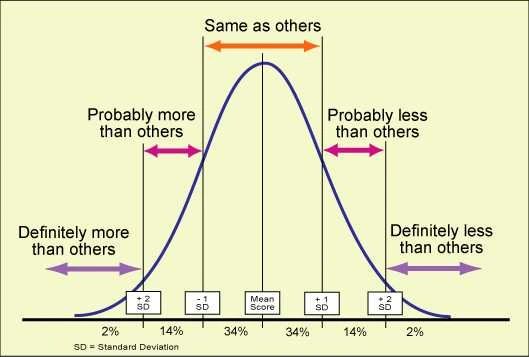
From the Way
From The Way 022711
Instead of news: more blah blah from the Fringe.
This piece has a Dissenting Editor “Ickyness” factor of 7/10
Any good Liberation Sociologist looks forward to giving the undergraduate lecture on “deviance.”
Naturally, students often look forward to a discussion of leather whips and ball gags, or at least paraphernalia. Some have a favorite story about an uncle they are eager to share.
Nothing could be further from the subject. The term “deviance” derives from “de- of or from” and “via- road or way.” Deviance is wandering from the path.
What a good introductory lecture on deviance does is explore the “way”.
How do we, as individuals, know where the “way” is? How do so many of us manage to stay on the “way”, making others who don’t fall outside the margins?
The answer to that is a fascinating story of human psychobiological evolution, the relationship between the “self” and “others”, the meaning of the person in culture, and the distribution of power in a society. The discussion shows us that the “way” is a shifting, ever-changing and variegated collective product, and that it is different for all of us, based on our age, gender, ethnicity, and wealth. It demonstrates that deviance and conformity arise in our behavior resulting from our interpretations of the expectations of others, and our own biological and psychological predispositions.
But, wait! I’m not going to give that lecture, because Prospect readers aren’t students who have to sit and listen and get a decent grade or their parents will send them to trade school.
Instead, we’ll talk dirty and eventually I’ll tell a favorite uncle story!
Fun Facts:

Curve of normal distribution. Anything outside of the two center strips
(about 68% of the represented population) is deviant. On anything.

Jerry Seinfeld as you. Speaking of deviants,
some people simply don’t know when it’s over.

Hawaiian royalty, like the royalty of ancient
Egypt, Thailand and other places, frequently
married sister and brother. This is the great
Queen Liliuokalani, who may or may not
have had an Uncle Daddy.

Hey, I can see my house from here!

Catfish Lovin’. Original photo from HERE


Dodgson from Wiki Photo by Dodgson
Doing his part for pedomorphosis: Charles Lutwidge Dodgson, also known as Lewis Carroll.
Was the author of “Alice Through the Looking Glass” a pedophile? Some insist he was,
others maintain he wasn’t, and some suggest it simply wasn’t that big of a deal then.

Pederasty in Ancient Greece: what did you bring from the market?

Probably just friends. "Lesbos"

Stoning: the person is buried to the shoulders and
stones of a certain weight are thrown at their head.
Is anyone free in a society where people can be
killed for their sexual preference?


Look like anything? It’s located by the “balls of the feet”; coincidence?

Mongolian cluster foot. Hey, you foot fetishists, stop touching yourselves!

Zipper tongue, extreme piercing from here
In sum, we encourage all our readers to go forth and deviate!
Oh, the Uncle Story: Once a long time ago my uncle Handy worked in maintenance at the zoo. He was a big man, hairy and hulking.
One day he was called to the zoo office.
“Handy,” he was told, “Ophilia, the female gorilla is losing weight. We’re worried about her. The problem is, she’s in season, and she’s love sick, and we can’t find a male gorilla to service her. Naturally, we thought of you.” The zoo master cleared his throat, “there’s two thousand dollars involved,” he said.
The story goes it took a second for the situation to register with Uncle Handy, then he looked at the love sick lady gorilla for a moment and gently nodded his head.
“I’ll do it, “ Uncle Handy said, “On two conditions. One, no one must ever know. And, B., it will take me awhile to get the two grand together.”

Leg of lamb: We all know what they say about the
Basque shepherds, but only some of ewe know if it’s true!
Instead of news: more blah blah from the Fringe.
This piece has a Dissenting Editor “Ickyness” factor of 7/10
Any good Liberation Sociologist looks forward to giving the undergraduate lecture on “deviance.”
Naturally, students often look forward to a discussion of leather whips and ball gags, or at least paraphernalia. Some have a favorite story about an uncle they are eager to share.
Nothing could be further from the subject. The term “deviance” derives from “de- of or from” and “via- road or way.” Deviance is wandering from the path.
What a good introductory lecture on deviance does is explore the “way”.
How do we, as individuals, know where the “way” is? How do so many of us manage to stay on the “way”, making others who don’t fall outside the margins?
The answer to that is a fascinating story of human psychobiological evolution, the relationship between the “self” and “others”, the meaning of the person in culture, and the distribution of power in a society. The discussion shows us that the “way” is a shifting, ever-changing and variegated collective product, and that it is different for all of us, based on our age, gender, ethnicity, and wealth. It demonstrates that deviance and conformity arise in our behavior resulting from our interpretations of the expectations of others, and our own biological and psychological predispositions.
But, wait! I’m not going to give that lecture, because Prospect readers aren’t students who have to sit and listen and get a decent grade or their parents will send them to trade school.
Instead, we’ll talk dirty and eventually I’ll tell a favorite uncle story!
Fun Facts:
- We are all deviants in our own manner. It might not be a fun or interesting deviance, but we all have behaviors that fall “from the way.” Would you like to share yours?

Curve of normal distribution. Anything outside of the two center strips
(about 68% of the represented population) is deviant. On anything.
- Humans are basically complicated, gadget-obsessed bees! There is an area on the underside of our brains that is given over wholly to the recognition and interpretation of faces. It lights up at the most elementary facial image, and recognizing people and understanding their mood is one of the earliest skills we work on, long before walking, we learn to attend and smile. We are so thoroughly social we can hardly think for ourselves, and indeed, many don’t.

Jerry Seinfeld as you. Speaking of deviants,
some people simply don’t know when it’s over.
- The more conservative and fundamentalist you are, the easier it is to be a deviant. The narrower your world view, the narrower your “way”. Some people pride themselves on being very dogmatic and rigid, but most people don’t, so those who do are automatically deviants. See how it works?
- In totalitarian societies (totalitarian democracy is a kind of totalitarian government) the nature of deviance changes with the needs of the state.
- In societies with a great deal of tolerance and personal freedom, there are very few deviants.
- America is filled with deviants of all sorts. You do the math.
- The rules of society to which most people conform (thereby creating “deviants” of those who don’t) nearly always refer to two things: 1. The distribution of wealth; and 2. The meaning and value of the person judging by their age, gender, ethnicity and, of course, wealth! Therefore, some people, by virtue of their age, gender and wealth, can do things that would make you a deviant. (Try crawling into a hot-tub full of boy-scouts.)
- Nearly all human societies have a concept of “deviant” or “unclean” or “tapu”. Some groups, for example, have dozens of ways a person can commit “incest” but only some of them refer to consanguinity. Those rules are intended to carefully regulate marriages between different clans and tribes where breeding populations are relatively small (like the Sierra Valley), but also to reduce the likelihood of war. As a rule of thumb, societies in which the daughters go to live with the husband’s family fight much more often than societies where sons go to live with wives.

Hawaiian royalty, like the royalty of ancient
Egypt, Thailand and other places, frequently
married sister and brother. This is the great
Queen Liliuokalani, who may or may not
have had an Uncle Daddy.
- In early human groups, and in class-bound societies today, deviance could lead to death or exile. Shunning is where people of the community refuse to talk to a deviant person; to ostracize a person is to avoid all contact, essentially kicking the person out by refusing them a place in society. In primitive societies, individuals quickly fall prey to animals or hunger; in modern societies such individuals do poorly, and often abuse drugs. Because…
- It literally hurts a person not to have a social network. Such people frequently suffer depression or anxiety disorders. Among primates, the loss of status can lead to endocrine changes and early death. Buzz buzz, we can’t live without the collective!

Hey, I can see my house from here!
- Many like to think that laws describe deviance and reward conformity, but laws are potent only in some instances, and they generally rather poorly reflect social values. Deviance has much more nuance and situational definition than can be defined by law. Hence, you can break a law that everyone breaks and not be deviant, or you can lust after the large sucking mouths of catfish and probably not break the law.

Catfish Lovin’. Original photo from HERE
- It is very possible that humans exhibit “pedomorphosis”, in other words we maintain the features of juveniles as adults, such as broad foreheads, large eyes, and hairlessness. It is possible that, when males and females pair bond, males prefer a younger female because she would have more vitality and a longer reproductive life. Males selecting younger looking mates might be one reason we are hairless (there are other pressures, too). In addition, males attend females as soon as the relation of breast-waist-hips is clear. When the ratio diminishes on the other side of menopause, so does attention. Female dress throughout the world and through history is an effort to mediate or enhance that relationship.


Dodgson from Wiki Photo by Dodgson
Doing his part for pedomorphosis: Charles Lutwidge Dodgson, also known as Lewis Carroll.
Was the author of “Alice Through the Looking Glass” a pedophile? Some insist he was,
others maintain he wasn’t, and some suggest it simply wasn’t that big of a deal then.
- There is strong evidence that both male and female homosexuality are present in normal population variability, and there is strong reproductive benefit to having males and females who do not reproduce, but instead contribute to the offspring of siblings as a way to increase the success of the genetic code they share (about 50%).

Pederasty in Ancient Greece: what did you bring from the market?
- It appears that all of us have a ganglion in our brains that strongly influence our sexual preference. It can be modified by culture and personal experience, but it is not erasable.
- The term “homosexual” does not exist in all cultures. In some cultures, same sex experience is considered normal, and “play” or “practice” sex. Only sex which can result in an heir is of interest to some societies.

Probably just friends. "Lesbos"
- In some societies, it is possible and deviant for women to be homosexual, but male homosexuality is not addressed. In some societies, it is legal to stone homosexual men.

Stoning: the person is buried to the shoulders and
stones of a certain weight are thrown at their head.
Is anyone free in a society where people can be
killed for their sexual preference?
- A person’s dedication to the “way” is powerfully influenced by how much they feel they would lose by deviating. This is evidenced in many ways, one example is marriage views among young Indians, where the arranged marriage is giving way to western style “romance”. Another is seen in diehard Communists in Russia, who wait for the old government to return just as monarchists await the return of the King to Italy or France.
- Deviance is often very exciting. In modern times, deviance behavior often becomes the norm. Deviance in dress and speech defined the “60’s” generation, whose psychedelic colors and long hair became absorbed by culture, and then became passe’.
- Foot fetishes are common, and might have a neurological basis in that the feet and genitals are adjacent areas in the cortex, though it is possible that the folds and protrusions of the foot register with the part of the brain that is wired to light up when male or female genitalia are viewed. In some cultures, the feet are very important, examples would be periods of famous French footwear or Japanese foot binding.


Look like anything? It’s located by the “balls of the feet”; coincidence?

Mongolian cluster foot. Hey, you foot fetishists, stop touching yourselves!
- Some deviance behaviors actually purchase a person prestige within an in group. Body piercing and scarification can be examples.

Zipper tongue, extreme piercing from here
- Most humans like to do what others do.
- Most humans like to hate a scapegoat, a deviant, in order to feel more like one of the hive!
In sum, we encourage all our readers to go forth and deviate!
Oh, the Uncle Story: Once a long time ago my uncle Handy worked in maintenance at the zoo. He was a big man, hairy and hulking.
One day he was called to the zoo office.
“Handy,” he was told, “Ophilia, the female gorilla is losing weight. We’re worried about her. The problem is, she’s in season, and she’s love sick, and we can’t find a male gorilla to service her. Naturally, we thought of you.” The zoo master cleared his throat, “there’s two thousand dollars involved,” he said.
The story goes it took a second for the situation to register with Uncle Handy, then he looked at the love sick lady gorilla for a moment and gently nodded his head.
“I’ll do it, “ Uncle Handy said, “On two conditions. One, no one must ever know. And, B., it will take me awhile to get the two grand together.”

Leg of lamb: We all know what they say about the
Basque shepherds, but only some of ewe know if it’s true!
